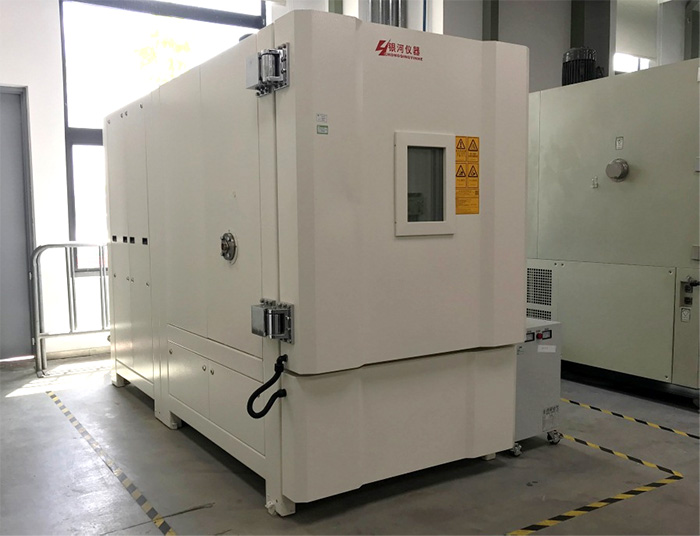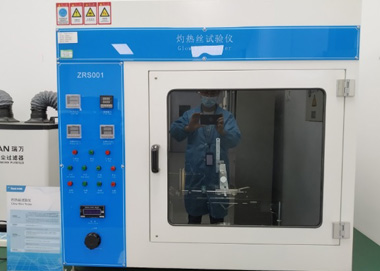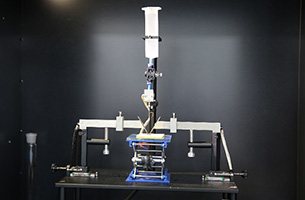The low air pressure test is mainly used to determine the suitability of components, equipment or other products for storage, transportation or use under conditions of temperature and low air pressure environment. For equipment installed in the plateau and at high altitude, the low air pressure test is particularly important. Most of the equipment is generally fixed in a certain area (except on-board and airborne equipment), so the test is mainly carried out under conditions of constant air pressure.
For the low air pressure test, there are usually three ways: room temperature and low pressure, low temperature and low pressure, and high temperature and low pressure. In the area of 3000m altitude (70kPa), the low temperature environment mainly occurs, so the low temperature and low pressure test is generally used to investigate the ability of the equipment to withstand the low pressure environment. Due to the strong sunshine in the plateau areas, the product is installed in a highly protective environment and under the circumstances of poor air circulation where high temperature failure may occur due to thin air and heat dissipation, this problem cannot be ignored.
Test standards: GB/T 2423.21, GB/T 2423.25, GB/T 2423.26, IEC 60068-2-13, IEC 60068-2-40, IEC 60068-2-41, and GJB 150.2A are commonly used.
Test conditions: Room temperature and low pressure, high temperature/low pressure, and low temperature low pressure;
Room temperature and low pressure: The temperature and humidity environment where the specimen stays is the standard test environment, severity of air pressure is generally set to 1–84kPa, and the corresponding equivalent altitude is 31200–3000 meters. Duration of the test is 2min/30min/2h/4h/16h. The change rate of air pressure does not exceed 10kPa/min.
High temperature and low pressure: High temperature is generally 40℃/55℃/85℃/155℃, air pressure is generally 4/15/25/40/55/70kPa, and time is generally 2/16h. 55℃/70kPa/2h and 55℃/55kPa/2h are preferred.
Low temperature and low pressure: Low temperature is generally -55℃/-40℃/-25℃, air pressure is generally 4/15/25/40/55/70kPa, and time is generally 2/16h. -40℃/70kPa/2h and -25℃/55kPa/2h are preferred.
Test equipment:The tolerance of the low air pressure test chamber is generally required to be ±5% or ±0.1kPa (a larger value), but under the standard atmospheric pressure of 86kPa–106kPa, the tolerance is required to be ±2kPa. Our company is equipped with professional low air pressure test chambers whose test tolerance fully meets the above requirements. These test chambers can be used for performing individual temperature and low air pressure tests or combined test with comprehensive test coverage.

Product improvement:
1. Insulation ability: The decrease of air pressure will lead to reduction of insulation strength. For every increase of 1000m, the insulation strength will be reduced by about 8% to 13%. The insulation strength test can be performed on products that have finalized the design under conditions of low air pressure to verify the rationality of the design.
2. Breakdown voltage tolerance: For the products that have finalized the design, the breakdown voltage decreases with a decrease in air pressure. To ensure sufficient breakdown tolerance at high altitude, the electrical gap must be increased, and the actual test must be carried out in the test chamber.
3. Ability of the sealed device to withstand differential pressure: If the sealed device assembled under normal pressure is used at high altitude, its sealing performance will be degraded. You can perform a low air pressure test to check its ability to withstand differential pressure.
4. Derating with temperature rise: Due to thin air, the heat dissipation capability of the equipment that uses air cooling heat dissipation becomes worse, thus it is necessary to reduce the power of equipment. The reduction index can be obtained through simulation and test.















 Facebook
Facebook
 Twitter
Twitter
 Google+
Google+
 LinkedIn
LinkedIn
 Prev
Prev








